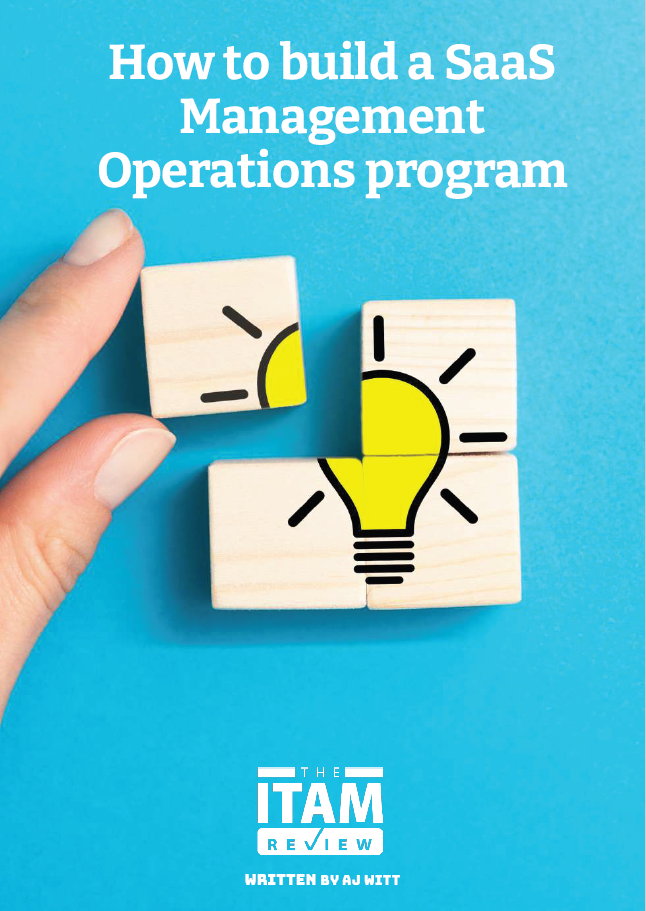How to build a SaaS Management Operations program (whitepaper)
The continuing growth in SaaS application usage presents IT operational teams with a new set of challenges and opportunities. In this extract from our whitepaper, co-written with SaaS Management tool provider Trelica, we explore these challenges in detail.
What is SaaS Management Operations?
SaaS Management Operations focuses on the transactional, day-to-day aspects of managing an organization’s usage of SaaS applications. For example, identifying new applications as they enter the organization, provisioning and deprovisioning users, securing access to applications, and controlling duplication and sprawl.
What is the business case for SaaS Management Operations?
Delivering technology efficiently
When IT controlled the end user experience directly, it was common for organizations to have a standard set of applications deployed centrally to each user. Users typically had a Windows account, a deployment of standard productivity apps such as MS Office, and an email client such as Outlook. In addition to these standard applications, users would have had role and department specific software centrally deployed – for example design or engineering software. The primary goal of this centralized approach was to efficiently and automatically deploy the applications necessary for the user’s role and to provide certainty about which applications were being used on the corporate network.
 For SaaS, this is more challenging. Not only are most users able to source their own applications but there is now a greater diversity of applications readily available. Trelica’s deep discovery via its optional browser extension sees on average 58 applications accessed per employee.
For SaaS, this is more challenging. Not only are most users able to source their own applications but there is now a greater diversity of applications readily available. Trelica’s deep discovery via its optional browser extension sees on average 58 applications accessed per employee.
This diversity presents an operational challenge. How do we effectively onboard a new user and get them up and running on day one? How do we make sure that application access is removed when a user leaves the organization? How do we also ensure that when a user leaves the organization critical business data is retained?
Reducing Shadow/Unsanctioned IT
Shadow IT has been an obsession for IT governance teams since SaaS became widespread. In fact, even prior to SaaS, organizations worried about user-developed solutions underpinning critical business processes. For example, organizations removed admin rights, preventing users from installing their own software and also blocked usage of end-user focused development tools such as MS Access.
The fear of Shadow IT comes from that lack of control. IT Governance teams are tasked with ensuring that the organization uses technology in a safe and legally-compliant manner. They simply can’t do that if they don’t have full visibility of the applications installed in their estates, or fine-grained insights into what those applications are used for. SaaS Management Operations can address this desire for control by providing processes for onboarding user-led innovations and solutions into centralized oversight.
Enabling innovation
The easy availability of SaaS applications has led to a democratization of innovation. Innovation used to be tightly controlled because IT was directly responsible for and had full control over the technology landscape for an organization. Yet, there has always been a desire for grassroots innovation, witnessed by the use of suggestion schemes and rewards for innovative ideas.
What SaaS does, when unmanaged, is remove IT controls from the innovation process and open it up to anyone. Users can source multiple applications, integrate them via APIs and services such as Zapier, and build new services to meet their needs, often completely free of charge and with no oversight from IT or other governance stakeholders. This brings risks because grassroots innovators aren’t necessarily focused on the governance of technology in terms of costs, regulatory compliance, operational risks, and so on.

Taken together, these three use cases for SaaS Management Operations provide a compelling business case for implementing your program. Employees get the tools they need to do their job, innovation is enabled throughout the organization, and the costs and risks of SaaS usage are understood and managed.
Read on
For the full text of the whitepaper, including analysis of the stakeholders, processes, and tools needed to deliver an effective SaaS Management Operations program click here.


